From Insight to Privacy: The Art and Science of Data Anonymization
Introduction
In an era dominated by the flow of data, the safeguarding of individual privacy has become an imperative challenge. This article delves into the critical domain of data anonymization, an indispensable practice that seeks to strike a delicate balance between harnessing the power of data and protecting the identities intertwined within it.
Navigating through the intricacies of data anonymization, we will unravel its core concepts, explore various anonymization methods, and dissect the challenges and considerations inherent in this process. From popular tools to advanced machine learning approaches, we will uncover the diverse landscape that comprises responsible data handling.
As we journey through the nuances of anonymization, from its applications in healthcare to scientific research and business operations, a comprehensive understanding of its pivotal role in diverse sectors will unfold. Join us in exploring the complex yet crucial realm where privacy and data utility intersect.
What is Data Anonymization?
Data anonymization involves transforming or modifying sensitive information to protect individual identities while maintaining data utility. The primary concept is to uphold privacy without sacrificing data usefulness. Unlike data masking, which focuses on concealing specific data elements, anonymization seeks to provide a broader safeguard by rendering the entire dataset less traceable to individuals. While data masking involves superficial changes, such as encryption or tokenization, data anonymization goes beyond, ensuring a higher level of identity protection. The key objective is to strike a delicate balance between safeguarding privacy and preserving the overall value and integrity of the data.
Common Methods of Anonymization
- Data Suppression:
Data suppression involves the deliberate removal of specific information, such as personally identifiable details, to prevent the identification of individuals. While effective in enhancing privacy, careful consideration must be given to avoiding data loss that could impact the utility of the dataset.
- Data Substitution:
In data substitution, original data is replaced with alternative information that retains statistical properties. Techniques like pseudonymization and tokenization fall under this category. It allows for analysis while reducing the risk of re-identification.
- Data Perturbation:
Data perturbation introduces controlled noise or alterations to individual data points, making it more challenging to trace them back to specific individuals. Techniques like adding random noise enhance privacy while preserving the overall statistical characteristics of the dataset.
- Data Generalization:
Data generalization involves summarizing detailed data into broader categories. For example, replacing specific ages with age ranges. This method reduces granularity, making it harder to identify individuals while maintaining the overall trends and patterns in the data.
- Data Swapping:
Data swapping involves exchanging values between different individuals within a dataset. This method maintains statistical relationships and patterns while making it difficult to attribute specific data points to their original individuals. However, careful implementation is necessary to avoid introducing biases or compromising data quality.
- K-Anonymity:
K-anonymity ensures that each record in a dataset is indistinguishable from at least 'k-1' other records. This is achieved by generalizing or suppressing certain attributes. While it enhances privacy, selecting an appropriate 'k' value and managing the trade-off between privacy and data utility are critical considerations in its implementation.
Challenges and Considerations
Data anonymization, while essential for privacy, presents several challenges and considerations that demand careful navigation.
- Risks of Re-identification:
The ever-present risk of re-identification underscores the importance of robust anonymization. Striking a delicate balance is crucial, as seemingly anonymous data could potentially be reverse-engineered to disclose individuals' identities.
- Balancing Anonymization and Data Utility:
The perpetual challenge lies in finding the sweet spot between effective anonymization and preserving data utility. Aggressive measures may render data less useful for analysis, emphasizing the need to carefully calibrate abstraction or perturbation to protect identities without compromising valuable insights.
- Regulatory Compliance (e.g., GDPR):
Navigating the complex landscape of regulatory compliance, such as GDPR, adds a layer of challenge to data anonymization efforts. Adhering to specific anonymization standards outlined in data protection laws is paramount to ensure legal compliance and protect individuals' rights.
Use Cases of Data Anonymization
Data anonymization plays a pivotal role in safeguarding privacy across various sectors, with notable applications in:
- Healthcare Sector:
In healthcare, patient data is rich but sensitive. Anonymizing health records allows for robust analysis without compromising patient confidentiality. For instance, researchers can analyze anonymized patient data to identify trends, assess treatment effectiveness, or enhance medical research while ensuring compliance with healthcare privacy regulations.
- Scientific Research:
In scientific research, particularly in fields like social sciences, economics, and environmental studies, anonymized data enables researchers to share datasets without revealing personal details. This facilitates collaborative research efforts, promotes transparency, and allows for the validation of findings without compromising the privacy of individuals involved.
- Businesses and Customer Privacy Protection:
Businesses routinely handle vast amounts of customer data. Anonymization is crucial for protecting customer privacy while still extracting valuable insights. For example, e-commerce companies can analyze purchasing patterns without exposing individual identities, enabling personalized marketing strategies without compromising customer trust or violating privacy regulations.
Technologies for Anonymization
Efficient data anonymization relies on a spectrum of tools and technologies, ranging from established solutions to cutting-edge approaches:
- Popular Tools:
- OpenRefine: An open-source tool for cleaning and transforming data, OpenRefine includes features for anonymization, making it a popular choice for data-wrangling tasks.
- ARX (Anonymization Toolbox): Designed specifically for privacy-preserving data anonymization, ARX offers a comprehensive set of algorithms to mask or modify sensitive information effectively.
- Google's Data Loss Prevention (DLP) API: This cloud-based solution is adept at identifying and anonymizing sensitive data across various formats, ensuring compliance with data protection regulations.
- Advanced Approaches and Machine Learning:
- Differential Privacy: This advanced technique introduces noise to the data to protect individual privacy while still enabling accurate analysis at scale. Apple's use of differential privacy in iOS is a notable example.
- Generative Adversarial Networks (GANs): GANs can be employed to generate synthetic data that preserves statistical properties, offering an innovative way to anonymize datasets while maintaining their utility.
- Homomorphic Encryption: Enabling computations on encrypted data, homomorphic encryption allows data analysis without decrypting the information, enhancing privacy in machine learning applications.
These tools and approaches cater to diverse needs, offering a range of options for organizations aiming to implement robust data anonymization strategies.
Best Practices for Data Anonymization
Implementing effective data anonymization involves adhering to key best practices to ensure privacy without sacrificing utility:
- Risk Assessment:
Conducting a thorough risk assessment is foundational. Understanding the potential vulnerabilities and re-identification risks associated with specific datasets guides the selection of appropriate anonymization methods. It allows organizations to tailor their approach, striking a balance between privacy protection and data usability.
- Continuous Monitoring:
Data landscapes evolve, and continuous monitoring is essential to adapt anonymization strategies accordingly. Regularly reassessing the effectiveness of anonymization techniques helps identify emerging risks and adjust measures to maintain a robust privacy stance over time.
- Education and Awareness:
Fostering a culture of education and awareness within an organization is critical. Training staff on the importance of data anonymization, its implementation, and the potential risks mitigates human errors and enhances overall data security. Building awareness ensures that privacy considerations become an integral part of the organization's data-handling practices.
Conclusion
In the ever-expanding landscape of digital data, the imperative to balance data utility with individual privacy has never been more pressing. As explored in this article, data anonymization emerges as a linchpin in this delicate equilibrium, safeguarding sensitive information across diverse sectors.
While challenges persist, from the perpetual risk of re-identification to the ongoing need for regulatory compliance, the importance of robust anonymization cannot be overstated. Striking the right balance involves leveraging both established tools and cutting-edge approaches like differential privacy and generative adversarial networks.
As we navigate this complex terrain, it is crucial to adopt best practices—conducting thorough risk assessments, embracing continuous monitoring, and fostering education and awareness. Organizations must not only recognize the importance of data anonymization but also integrate it seamlessly into their operations.
To streamline these efforts, consider exploring the Arkon Data Platform, a powerful data management tool designed to tackle the challenges of messy data. Embrace the future of responsible data handling—where privacy and utility coexist seamlessly—by discovering the capabilities of Arkon Data Platform today.


